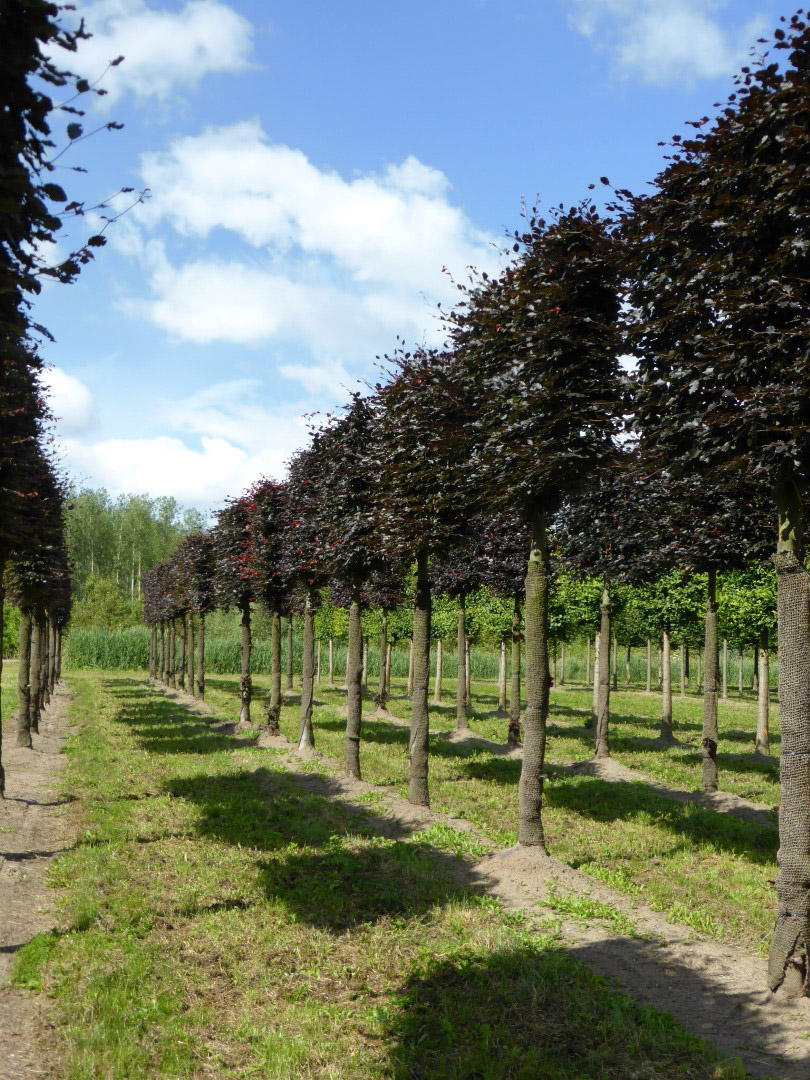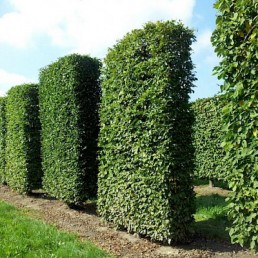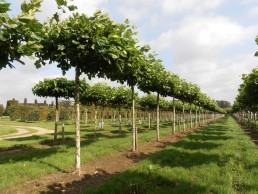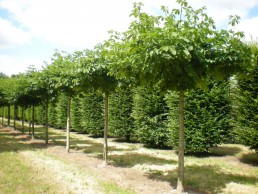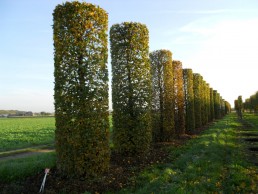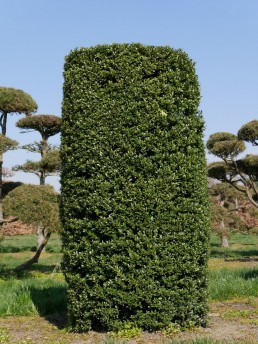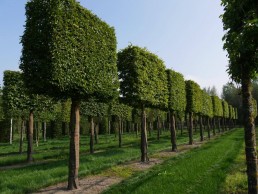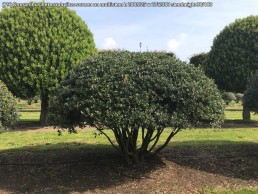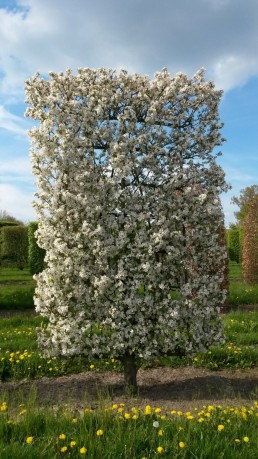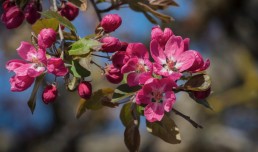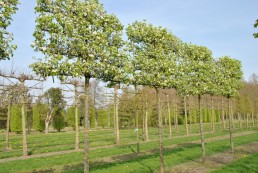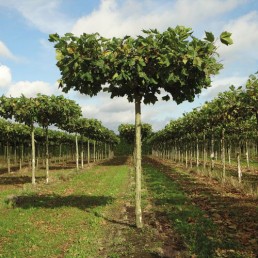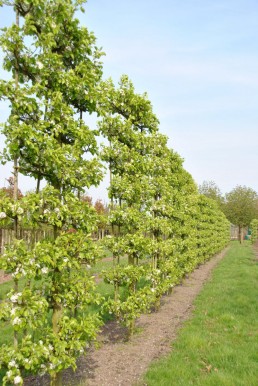“Fagus Sylvatica Atropunicea is an attractive purple-leaved variety of the Beech tree. It leaves emerge in spring a bright coppery red, changing to a bronze-green in summer before turning to orange and copper shades in autumn. The leaves of the Pleached Copper Beech may remain on the tree through much of the winter, and even the bare structured shape of the trees will add considerable visual interest.”
Inquiry form
If you would like to arrange a personal inspection of this Specimen, please enter your details below and a member of our team will contact you shortly to arrange a suitable time and date.
Description
Trees have been trained into formal architectural shapes for many centuries, and the use of pleached trees in the garden is one of the defining aspects of 17th and 18th-century design; particularly in France and Italy where they were traditionally used to demarcate grand allées or to create privacy.
Sometimes known as “hedges on stilts” pleached trees are shaped by using a square frame; tying-in and interlacing flexible young shoots along a supporting framework, creating a narrow, slim canopy. They are specially trained using a formal method by highly skilled nurserymen to create a clear, straight stem with a framework of parallel branches on top.
Screen pleaching creates a wonderfully dense but attractive visual barrier. Pleached trees can often be used to create instant screening around a garden, increasing the height of a fence or wall to give privacy from neighbours or a road or to block a view. Pleached trees are the natural way to bring an architectural look to a garden, without having to build genuine architectural features.
Pleached trees look fantastic in a formal garden and are perfect for providing instant screening, creating shade or adding drama in bold planting schemes.


